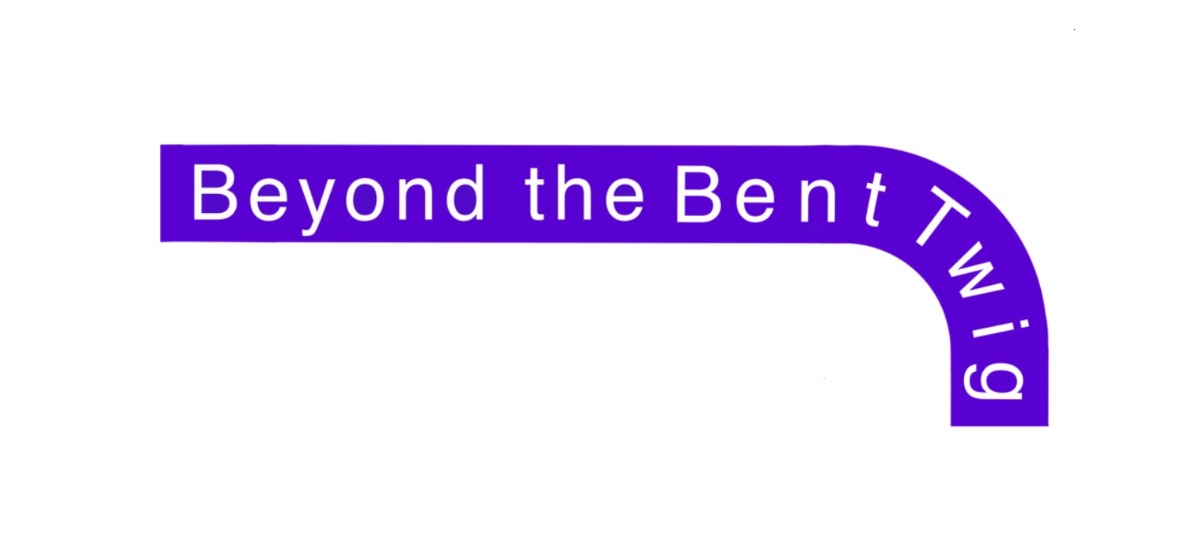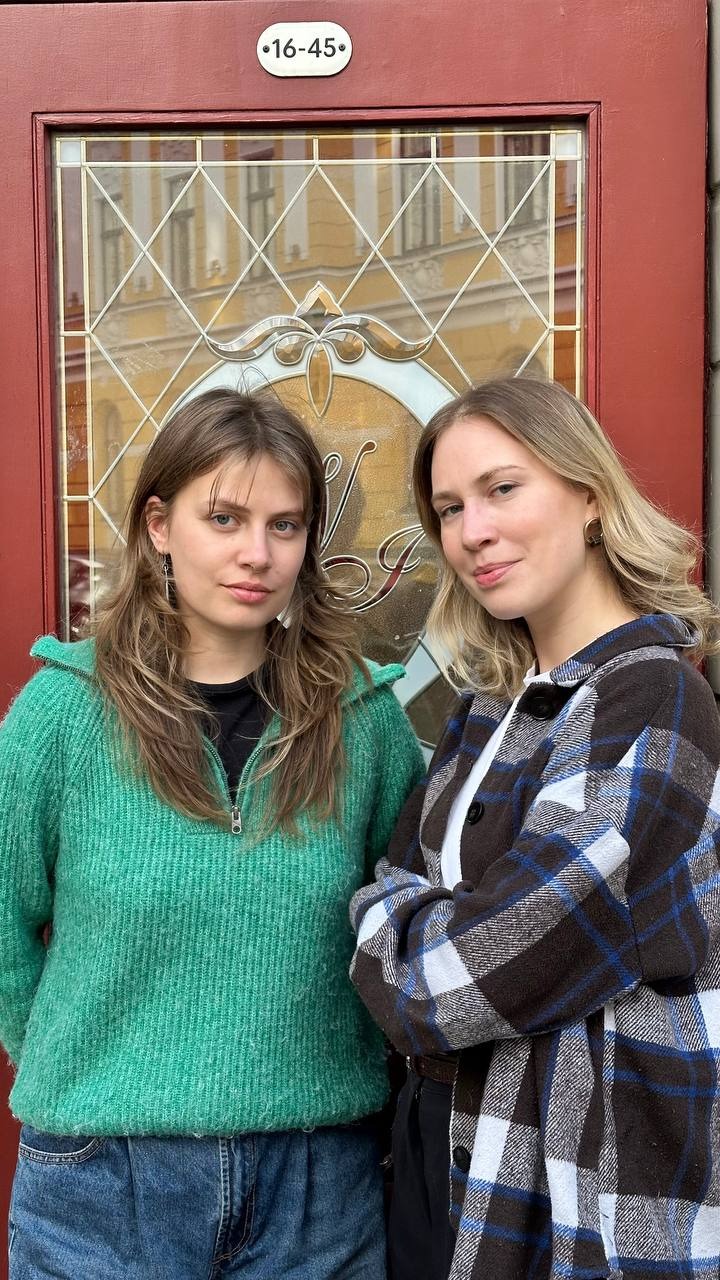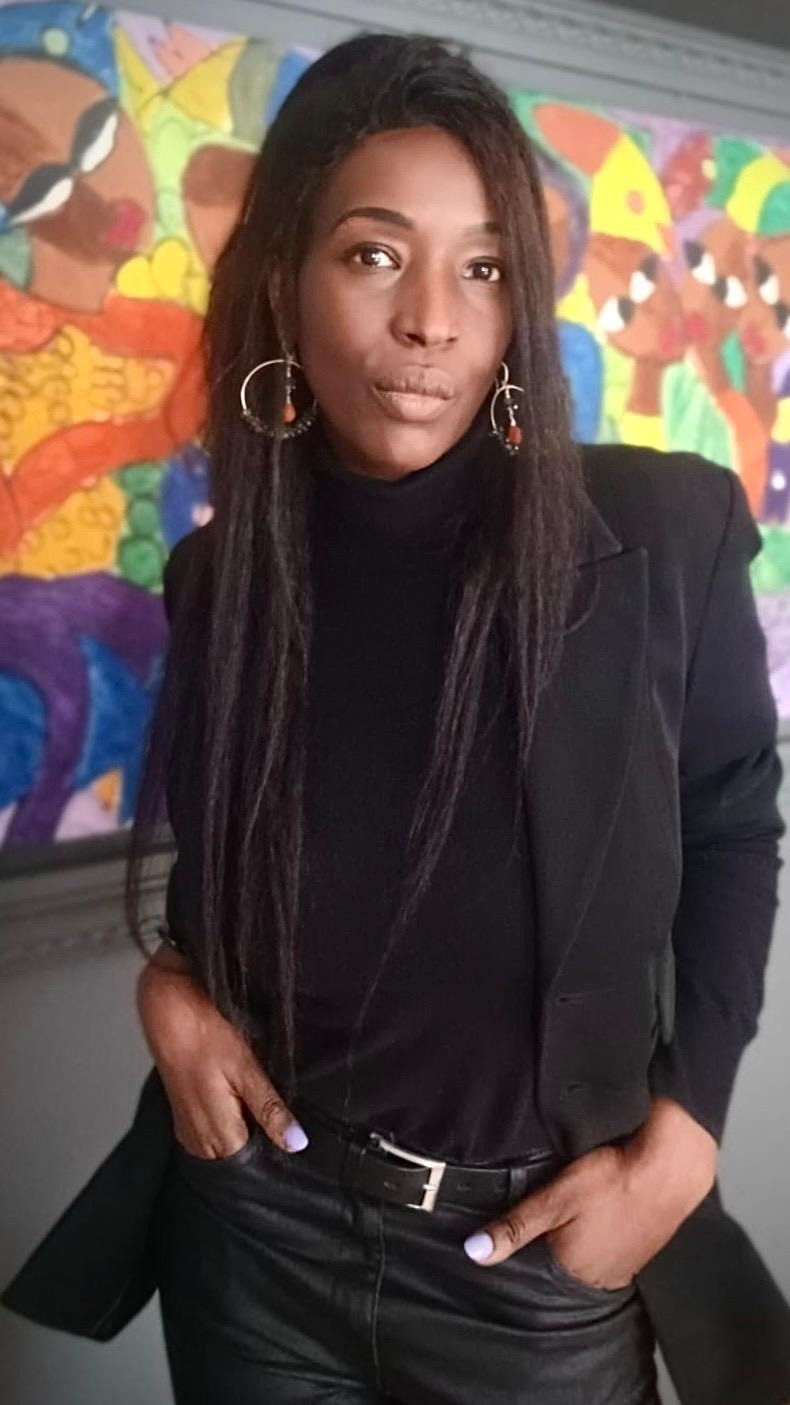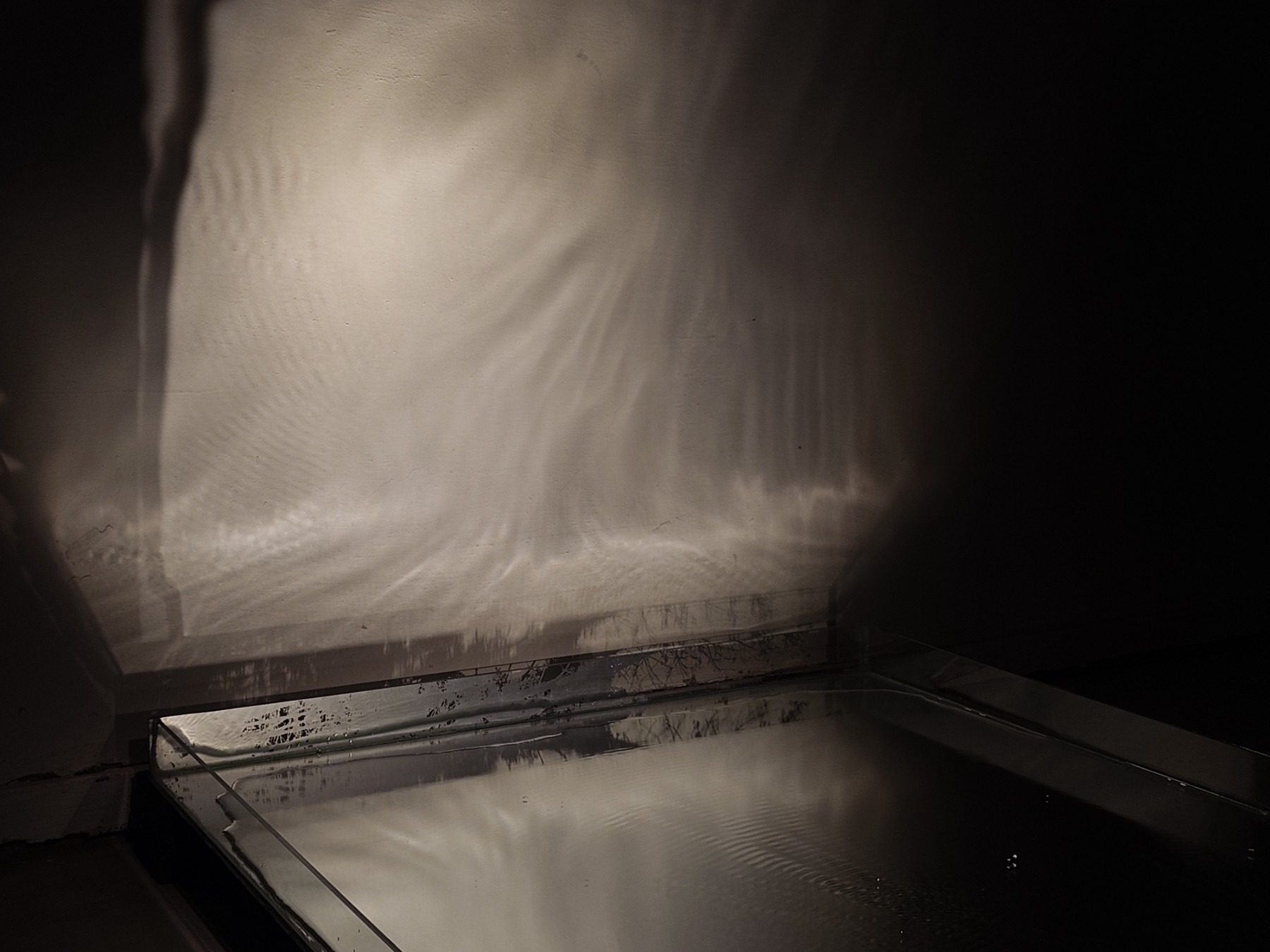
Beyond the borders
An interview with curators Veronika Gorbačova, Evelīna Gorbačova and Chantal Oryema that outlines the concept and mission of the exhibition Beyond the Bent Twig at the Museum of Pacific and Oceanic Arts in Riga and brings up a beyond-the-borders view on the art space in Latvia.
Opening on 29th May, 2025, during Riga Art Week but available to the public till 4th July, 2025, the art show Beyond the Bent Twig at the Museum of Pacific and Oceanic Arts in Riga will be calling on artists and visitors alike to reflect on what it means to be a part of Latvian society today.
Organised by the Head of the Curatorial Department Veronika Gorbačova and the Head of Digital Development Evelīna Gorbačova of online platform FOLLOW.ART, the exhibition will be recognising the importance of broadening our perspectives in the art. The partnership with Chantal Oryema, curator of the Museum of Pacific and Oceanic Arts in Riga, highlights the essential role of cultural diversity in cultivating meaningful and lasting connections. Through its vibrant collection of artistic expressions from Pacific and Oceanic regions, the museum becomes a conduit for cultural dialogue and shared understanding. By welcoming Latvian artists into this creative environment, it develops an atmosphere of mutual enrichment and promotes dynamic cross-cultural exchange. In a time when global tensions are rising and structures fracturing, there is value in looking outward and engaging with voices beyond our borders.
Beyond the Bent Twig will be bringing together a group of contemporary artists - Polina Smirnova, Santa Kristiāna Krūze, Konstantīns Belihs, Dāvis Vaivads, Keita Melle, Ēvalds Lazarevičs and Sandris Mūriņš - who represent the new generation of Latvian creators. Through diverse mediums and perspectives, they will reflect on what it means to be Latvian today and envision the kind of society they want to live in.

You all have fascinating backgrounds and experiences in relation to the art and culture. I would like to learn more about you and your professional developments.
Veronika: I developed my curiosity for the curatorial field during my studies at the Latvian Academy of Culture. My passion for exploring such a multifaceted role of curators and their diverse practices deepened significantly when I had the opportunity to lead the Curatorial Department at FOLLOW.ART. This unique experience brought me closer to practising curators around the world, whom I deeply admire for their strength, empathy, and proactive spirit. Just as our work at FOLLOW.ART is grounded in collaboration, the same mindset naturally extended to the curation of Beyond the Bent Twig.
As sisters and co-workers, Evelīna and I enjoy working on a range of projects in our free time, so putting together this exhibition felt like a really natural progression. By a stroke of luck, we learnt about the Museum of Pacific and Oceanic Arts in Riga, where we met Chantal and found out that our curatorial vision aligns with the museum’s mission, creating an ideal setting for the beginning of this show.
Evelīna: I have been getting my education in Italy, in Venice, and there I have been exposed to a lot of art. This is kind of where my journey in the art industry began, already six years ago. Over the past two years, I have been focusing on the intersection of art and technology while developing FOLLOW.ART - a network for curators and artists, which has always fascinated me due to my background in digital and public humanities.
We will be using FOLLOW.ART tools such as the artist Nexus Cards, which are smart profiles that showcase each artist’s portfolio, description of their practice and links to their socials. One of our main goals is to make it easy for visitors to learn more about the artists without relying on long brochures. Visitors can simply add the artist’s card to their mobile wallet and stay connected.
But returning to Beyond the Bent Twig and the objectives of the exhibition we organise in association with the Museum of Pacific and Oceanic Arts in Riga, I would like to add the word ‘accessibility’, particularly in light of the growing number of events in Riga that aim to draw in a larger audience to galleries. As an illustration, Riga Last Thursday was a great success from this angle, and in some respects, Riga Art Week will carry on this openness between the people and the art.
In my opinion, there is a need to venture slightly outside the typical art bubble. Accessibility to the arts leads to appreciation and further to engagement and a willingness to participate in and support it. The Latvian art scene is somewhat modest, but it is a very pleasant and comfortable place to be. It offers the chance to engage with artists in a friendly way that encourages partnerships and creates a sense of connection. Especially among younger audiences, this helps lay the foundation for a growing interest in art and turns art collecting into a habit.
Buying an artwork is the most direct way to support an artist, but it is a significant decision, as it takes time, thought, and money. That is why we are introducing a simpler option with FOLLOW.ART: If you connect with an artist’s work, you can support them through a one-time tip or a monthly contribution. It does not have to be much - even a small gesture can be the beginning of a collecting journey. Supporting the arts does not have to be out of reach, elitist or expensive. These days, anyone can do it.

Chantal: My background has really shaped the person I am today and the work I do. I was born in Uganda to Ugandan and Rwandese parents. My parents had to flee during Idi Amin’s dictatorship, and when I was just a baby, we moved to France and settled in Paris. Growing up in such a rich cultural city in the 1980s had a huge influence on me. It opened my mind and sparked a deep curiosity for the arts and for different ways of life.
My father, Geoffrey Oryema, was a singer and composer known internationally, and through his music I was introduced early on to the power of storytelling and cultural identity. Even though I studied psychology and pedagogy, I kept gravitating back to the arts. I started working in the music industry and gradually moved toward art development, where I could combine creativity with educational values.
Coming to Latvia was a key moment. I was invited to work on the Exupery International School project, which brought together my interests in education and the arts. It was here that I met Suluo Daunivalu, founder and director of the Museum of Pacific and Oceanic Arts. That connection led me to become involved with the museum’s mission - and it felt like a natural extension of everything I had been working toward.
Today, this journey has grown into a curatorial practice rooted in cultural dialogue, education, and community-building. At the Museum of Pacific and Oceanic Arts, this means shaping exhibitions, building partnerships with both local Latvian and international artists, and developing programmes that invite the public to engage meaningfully with art and heritage.
In addition to curating, I have also developed personal projects, including a children’s book and a documentary about my family heritage. These works come from a sense of responsibility - to pass something on, to create opportunities for others to be curious and inspired. Especially for younger generations, I want to create spaces where they can discover other cultures, ask questions, and find their own creative voices.
This vision is also central to the mission of the museum - to present a rich and multifaceted palette of art and culture from the Pacific and Oceanic regions. Through painting, sculpture, dance, music, literature, and oral traditions, the museum offers not only artistic expression but also a way to trace shared histories, reveal interwoven narratives, and deepen understanding of these diverse cultures. It is a space where heritage meets contemporary creativity, where artistic forms are honoured in their depth and complexity, and where visitors are invited to reflect on the cultural threads that connect distant geographies and generations. The museum serves as both a platform and a meeting point - for artists, researchers, and communities - to engage in meaningful exchange and cultural discovery.
That is exactly what our current exhibition, Beyond the Bent Twig, explores - how we continue to engage with cultural heritage in meaningful and evolving ways and how cultural spaces can remain alive, relevant, and open to new conversations.
What about the curatorial idea of Beyond the Bent Twig, and how did you develop it?
Veronika: At its core, the exhibition is a call to action on both a personal and national level. It is a way of confronting passivity and staying silent when you feel that decisions are being made for your future. Initially, as someone who has left this country once, I do not want to do it again. I want to stay in Latvia; I want to build my life here and have a nurturing environment around me. I feel like in order to stay in this country, there is a need for a reflection.
With more and more young people leaving the country every year in search of a better future, and the population continuing to shrink, this reflection feels more urgent than ever. The big question is: what would need to change for people to stay? And what can each of us do to make things better right here?
This exhibition is our way of opening up that conversation.
The reflection is multilayered, and inevitably it also connects with the topic of national identity and what it means to be Latvian, and what it means to be a part of our society today. And since strengthening of national identity has been a core priority in our cultural policy, this exhibition is providing more of a bottom-up approach to understanding our national identity and understanding how we can all live together.
This obviously is a wide topic, and we are narrowing it down with the title of the exhibition - Beyond the Bent Twig. The twig metaphor comes from Riga-born philosopher and historian Isaiah Berlin. It is a tribute to a person who walked the same streets of Riga a hundred years ago. The metaphor - the bent twig - explaining how small nations are subjected to oppression, how they bend like a twig and then how unavoidably it snaps back, resulting in the national awakening and in nationalism. Here we are exploring nationalism in all of its forms, as something that holds our society together and that helps us through tough times, and as something that inevitably excludes others who also call Latvia their home.
Evelīna: Since February 2022, with the Russian invasion in Ukraine, everything kind of became accelerated; all the processes became accelerated. At the same time, I believe Western countries could learn a lot from the Baltic states, as the region has long faced threats to its sovereignty. This experience has led to the development of resilient and preventive mechanisms.
There is a very positive outlook in relation to the arts towards the Baltics at the moment, and we should definitely embrace this. By seeing more and more amazing initiatives happening in Latvia, like Riga Art Week or Riga Contemporary, as well as developing art prizes like the Linstow Art Award or the Vija Celmins Foundation Grant. This is very uplifting! Also talking about regions of Latvia, the activity is very obvious, for example, the MUD LAB in Latgale. The Latvian art scene is becoming more outward-looking, and that is extremely exciting, and as Veronika said, we are setting this stage for the dialogue.
Painting by by Aloi Pilioko at the Museum of Pacific and Oceanic Arts in Riga
Chantal, the Museum of Pacific and Oceanic Arts in Riga is representing the region with a difficult history, especially through geopolitical perspectives. How is this playing the role in relation to Beyond the Bent Twig?
Chantal: The Pacific and Oceanic region has a complex history shaped by European colonial powers such as Britain and France from the late 18th century through much of the 20th century. This period profoundly affected Indigenous communities, disrupting traditional governance and cultural practices.
While many Pacific and Oceania nations have since gained independence, the political landscape remains delicate in some areas. In 2024, countries like Vanuatu have experienced referendums and government changes that reflect ongoing efforts to build stable governance systems amid lingering historical influences.
Beyond politics, the region is experiencing a dynamic cultural resurgence. Contemporary Pacific artists engage with themes of heritage, identity, and environmental stewardship. A prominent example is Oceanic Refractions, curated by Suluo Daunivalu for the Curators Pavilion at the 19th Venice Architecture Biennale this year. This project explores Oceanian perspectives on sovereignty and ecological care through innovative architectural and multimedia works.
Similarly, the exhibition Beyond the Bent Twig engages with these ideas through its exploration of Latvian identity and societal reflection. Latvia and the Pacific share a deep connection to nature - land and water deeply influence their folklore, traditions, and art forms like dance and storytelling. This shared bond enriches the conversation the museum supports and develops.
As Fijian anthropologist Epeli Hau‘ofa said, “We are the ocean, not just the islands in it.” This reminds us that cultures thrive through connection and openness, a vision at the heart of both the museum and the exhibition.
Installation by Dāvis Vaivads

There is a solid list of artists participating in the exhibition, and it is important to talk about their artworks and creative approaches to the show.
Veronika: We always intended for the exhibition to be a team effort. That was crucial for us as we recognised how broad the subject is. Speaking about the topics we are exploring through the show - each artist has their own individual experience and reflection to go through; they all have different backgrounds. For us, this type of diversity was also very significant. At this point, most of the artwork is being created for the exhibition; thus, it is being created gradually. Additionally, making artworks specifically for this show, it made the process of experimenting possible, as many of the artists are exploring and moving outside their typical working methods and media.
Evelīna: I think it is very interesting and exciting because, as Veronika mentioned, many of the artists have started working in a different medium for this project, and it shows that the preparation process includes a very free-for-interpretation approach with the art and artworks that are going to be exhibited.
For example, an artist, Santa Kristiāna Krūze, is a painter. She is creating what we like to call hyper-sentimentalism. Her artwork is about micro-cultures, about personal experience, about observing people and telling their stories. It is very heartwarming and cosy artwork. For the exhibition she started working with a metal, and she is going to present an artwork that combines metal, grass, and soil. That is something we have not seen yet, and it will be very exciting to see what is going to come out of it. Another artist, Konstantīns Belihs (known as Kosti), having a diverse art background, is now exploring text-based art. The project he is going to present - a written piece in progress - reflects his creative style, seeing art as an ongoing journey. Dāvis Vaivads is going to present an installation with a use of water, light, and sound; Keita Melle is going to present a ceramic work; but Polina Smirnova is going to exhibit her paintings. The duo Sandris Mūriņš and Ēvalds Lazarevičs are going to create something very interesting using the smell and music because Ēvalds is a composer and pianist, but Sandris is an aerographer. It is very much like all the senses will be involved.
Just to finish here, I would like to say that it also will be very interesting to see how each of the artists reflect on the topic, some of them, like, a very personal and kind of more self-orientated, self-reflection way through themselves as individuals, but some of them like, for example, Keita Melle, will be showing her thinking about the processes in the society and how people interact with each other.
Chantal, kindly elaborate on the museum's collection and how it relates to Beyond the Bent Twig.
Chantal: The Museum of Pacific and Oceanic Arts, located in Riga’s Art Nouveau district, celebrates the rich cultural heritage of the Pacific and Oceanic regions. Founded over 14 years ago by Suluo Daunivalu, an internationally respected curator from Fiji, the museum’s mission is to showcase a wide range of artistic expression - from traditional artefacts to contemporary works - highlighting the history, colour, and spirit of a region encompassing over 20,000 islands.
Its collection includes more than 100 pieces, featuring ceremonial artefacts, historical weapons, and contemporary artworks by artists like Aloi Pilioko from Vanuatu and Penelope Casey. The museum encourages cultural dialogue through collaborations such as the 2016 Colours of Oceania exhibition with the Museum of Medicine in Riga and photo exhibitions like the recent show by Latvian artist Lauris Vīksne, who transforms urban spaces through his masterful use of light and shadow.
Education is central to the museum’s vision, offering programmes that engage children and schools, developing curiosity and appreciation for diverse cultures. The museum also extends its reach by hosting dance festivals in Riga, London, and internationally, emphasising shared connections between Pacific and Latvian traditions, especially in dance, folklore, and nature-inspired storytelling.
When Evelīna and Veronika approached us with the Beyond the Bent Twig project, it felt natural and important to support their message. The exhibition brings together new-generation Latvian artists exploring identity and belonging in today’s global context. Using Isaiah Berlin’s metaphor of the ‘bent twig’, the show invites open dialogue about Latvian identity, creating a platform for diverse artistic voices alongside the museum’s Pacific and Oceanic collection.
Through these initiatives, the museum develops a dynamic space where cultural heritage and contemporary creativity meet, inspiring deeper understanding and ongoing conversations.
Veronika: The moment I stepped in the Museum of Pacific and Oceanic Arts in Riga, I felt like I have had entered into another world where the sun is shining, and it is a place full of colours, warmth, and cosiness that is actually quite unique for art spaces in Riga. This great museum’s scenography completed the puzzle by coming together with the exhibition’s curatorial idea. If we talk about going beyond, then it definitely underlines the idea of coming beyond the bubbles, beyond the traditional concepts. It is a complimentary space that is so different but so strong in its own concept and museum’s mission.
Have you all encountered any difficulties or challenges while working on the exhibition?
Evelīna: I believe that every aspect of the creative project - and, I suppose, all creative project - invariably presents some sort of challenge. For me personally, it would be satisfying to be able to connect with people who are not typical gallery visitors, to reach out to areas of the city and, ideally, the country where people do not attend exhibitions very often and may not be particularly interested in the visual arts, but they find something that appeals to them and would satisfy their needs in connection with this show.
When planning a public programme, our goal is to create a safe space for conversation and exchange. We want both the public and professionals to feel welcome and engaged. We want visitors to feel that this is a place where ideas are valued, and if you have something to say or explore, this is the space to do it.
Chantal: I really appreciate what Evelīna said about reaching out to people who might not usually visit galleries. That is something we care about deeply: creating a space that feels open, welcoming, and meaningful to anyone who walks in, no matter their background or experience with the art.
For me, one of the most powerful parts of an exhibition is that it stays with you after you leave. Maybe it is a feeling, a new question, or simply a quiet moment that lingers. We are not here to provide answers but to offer a space where people can pause, connect, and reflect in their own way.
We believe the art has the power to start conversations, shift perspectives, and bring people together. This exhibition is just that - a shared space to explore, feel, and imagine. We would love for you to be part of it. Join us at the opening on the 29th May, 2025, and throughout the month. Your presence is what brings the work to life.
